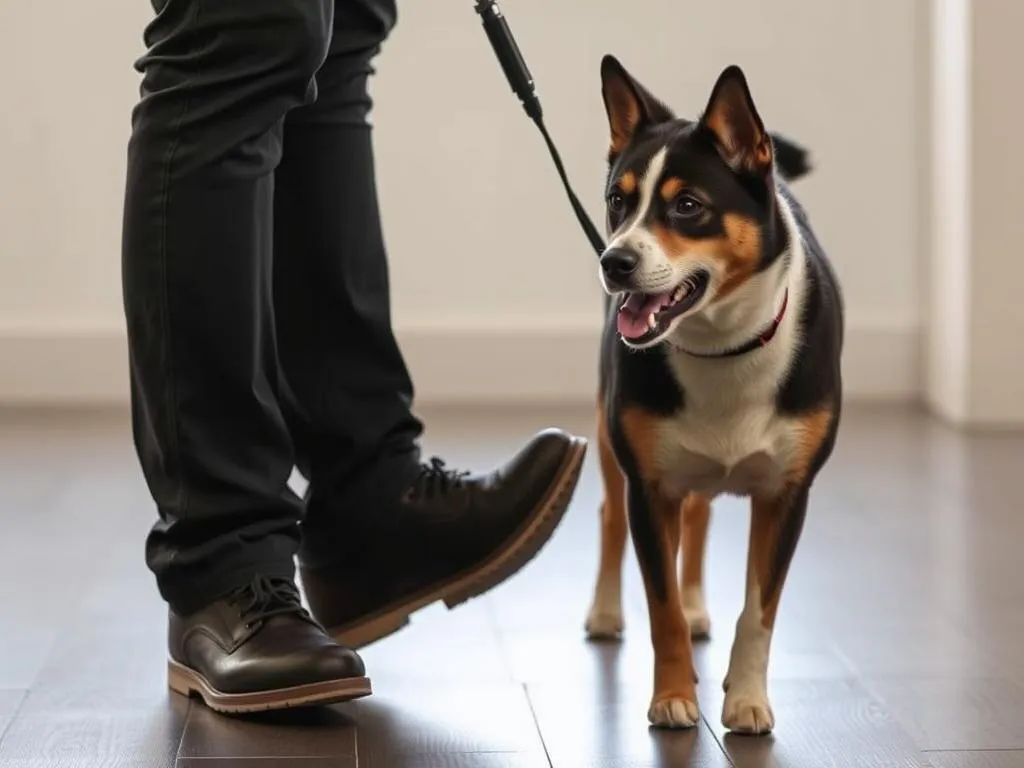
Teaching your dog to heel is an essential command that enhances both your control during walks and the bond you share with your furry friend. The heel command means that your dog walks closely beside you, making outings safer and more enjoyable. As you embark on this training journey, consistency and positive reinforcement are key. In this article, we’ll delve into everything you need to know about teaching your dog to heel, from understanding the command to advanced techniques.
Understanding the Heel Command
Definition of Heel
The term “heel” in dog training refers to a specific position where your dog walks closely beside you, usually with their shoulder aligned with your leg. This position allows for better control and communication between you and your pet. When your dog is in the heel position, they are not pulling on the leash or wandering off, allowing for a more pleasant walking experience.
Benefits of Teaching Your Dog to Heel
Teaching your dog to heel offers numerous benefits:
- Improved Control: You can manage your dog’s movements better, especially in crowded or distracting environments.
- Enhanced Safety: Keeping your dog close minimizes the risk of accidents, such as darting into traffic or getting into altercations with other animals.
- Strengthened Bond: Training sessions provide quality time together, reinforcing your relationship.
- Better Behavior: A well-trained dog tends to exhibit better manners in public settings, making outings enjoyable for everyone.
Preparing for Training
Choosing the Right Equipment
Before you start, it’s important to have the right gear:
- Leashes: Opt for a sturdy, non-retractable leash that offers good control. Standard lengths are typically 4 to 6 feet.
- Collars vs. Harnesses: A flat collar is sufficient for most dogs, but a harness can be a better choice for dogs that pull.
- Optional Training Tools: Clickers can be effective for marking desired behaviors, and high-value treats can motivate your dog during training sessions.
Selecting the Ideal Training Environment
Choose a distraction-free environment to help your dog focus. Ideal locations include:
- Your home or backyard
- Quiet parks
- Early morning or late evening when fewer people are around
Timing is crucial; choose moments when your dog is neither too excited nor too tired.
Understanding Your Dog’s Personality
Each dog is unique, and understanding their personality can significantly impact training success:
- Different Breeds: Some breeds may require more patience or different approaches based on their temperament.
- Energy Levels: High-energy dogs may need more physical activity before training, while calmer dogs might be more focused.
- Signs of Stress: Watch for signs like yawning, panting, or turning away, and adjust your training sessions accordingly.
Basic Commands and Foundation Skills
Teaching Basic Commands First
Before jumping into the heel command, ensure your dog is familiar with fundamental commands like “sit” and “stay.” These commands are essential for maintaining control during training and help establish a foundation upon which to build.
Building Focus and Attention
Capturing your dog’s focus is critical for successful training. Here are some techniques:
- Use Treats and Toys: High-value treats or favorite toys can draw your dog’s attention.
- Short Sessions: Keep training sessions brief (5-10 minutes) to maintain your dog’s interest and focus.
Step-by-Step Guide to Teaching “Heel”
Initial Training Steps
Start by getting your dog into a sitting position beside you. Use treats to encourage your dog to stay close as you begin to move:
- Get Your Dog to Sit: Start with your dog in a sit position at your side.
- Encourage Movement: Use a treat to coax your dog to walk beside you, rewarding them for staying in the correct position.
Incorporating Movement
Once your dog is comfortable sitting beside you, gradually introduce walking:
- Begin with short distances, encouraging your dog to stay close by using treats and verbal praise.
- Keep your pace slow at first to help your dog adjust and maintain focus.
Reinforcing the Behavior
Reinforcement is vital in solidifying the heel command:
- Timing of Rewards: Reward your dog immediately when they are in the correct position to reinforce the behavior.
- Verbal Praise and Affection: Use a cheerful tone to praise your dog, and offer physical affection as a reward.
- Handling Distractions: If your dog becomes distracted, gently guide them back to the heel position and reward them for refocusing.
Troubleshooting Common Issues
Training doesn’t always go smoothly. Here are solutions to common challenges:
- Dog Pulls or Lags Behind: If your dog pulls, stop walking and wait for them to return to your side. If they lag, encourage them with treats to keep pace.
- Dealing with Distractions: Practice in a controlled environment first, gradually introducing distractions as your dog’s training progresses.
- Stubborn Dogs: If your dog resists, try breaking sessions into shorter, more frequent training times.
Advanced Techniques and Tips
Transitioning to Off-Leash Training
Once your dog has mastered the heel command on a leash, you may consider transitioning to off-leash training. Here are some safety considerations:
- Choose the Right Location: Begin training in a secure, enclosed area to prevent any accidents.
- Gradual Introduction: Gradually allow your dog to walk off-leash while maintaining the heel command, rewarding them for staying close.
Incorporating Heel into Daily Routines
Practice the heel command during regular walks to reinforce the behavior:
- Use the heel command consistently when walking in various environments.
- Incorporate distractions like other people or dogs to help your dog learn to focus regardless of the setting.
Continuing Education for Your Dog
Training should never stop. Ongoing education and socialization are crucial:
- Consider enrolling in classes to learn new techniques and meet other dogs.
- Utilize online resources, such as videos or forums, for additional guidance and support.
Conclusion
Teaching your dog to heel is a rewarding journey that brings numerous benefits, including improved control, enhanced safety, and a stronger bond between you and your dog. Remember to be patient, consistent, and to use positive reinforcement throughout the training process. A well-trained dog is a joy to be around, and the effort you invest will pay off in the end.
By implementing the techniques outlined in this article, you’ll be well on your way to enjoying peaceful, enjoyable walks with your dog at your side. Happy training!









